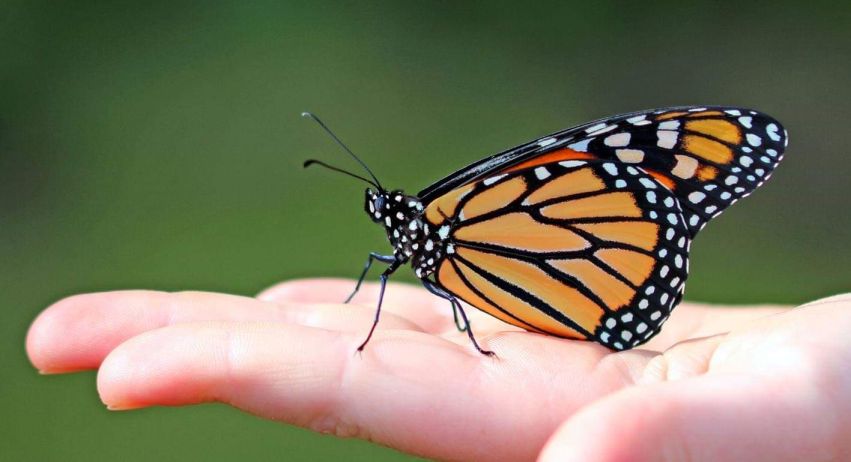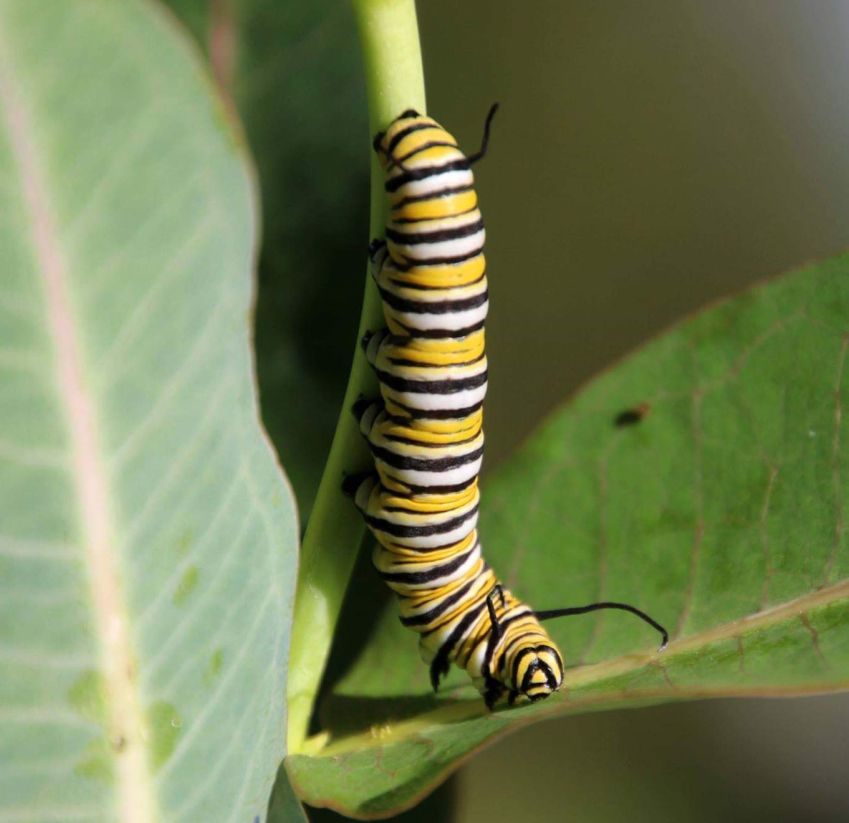
Ask one hundred people to name their favorite insect and nine out of 10 will answer: the monarch butterfly. Unfortunately, the population of this wonderful creature has declined by more than 80 percent over the past two decades. Spurred to act by this tragic situation, six members of the Peoria Garden Club established the Central Illinois Monarch Butterfly Task Force (CIMBTF) in 2015.
Their mission is to work with Illinois garden clubs, schools, businesses and other organizations to educate the public on the monarch’s usefulness and plight. According to CIMBTF co-chair Karen Logan, “Local interest in learning how to protect monarchs and to grow their population has increased significantly as a result of our efforts.”

The Amazing Monarch Life Cycle
Not only is the monarch incredibly beautiful, but its lifecycle is fascinating. Female monarchs lay thousands of eggs—up to a thousand in each clutch—but only on the milkweed plant. Milkweed is the only food that caterpillars will eat. Adult monarchs, on the other hand, consume the nectar of flowering plants.
It takes several generations of monarchs to migrate from the mountains of Michoacán, Mexico, and reproduce before their offspring return to Mexico. Most of these generations have a short lifespan ranging from two to six weeks; they may mate and lay eggs several times throughout this period. Some of the offspring of these short-lived generations migrate even further north—at times all the way to eastern Canada.
The generation that emerges in late August and September is particularly extraordinary! These butterflies live for eight to nine months and are sometimes called “super butterflies” because they migrate all the way back to Mexico, as much as 2,000 miles. However, these long-lived adults do not mate and lay eggs until they have overwintered in Mexico and migrated north in the springtime.
Another fascinating fact about the monarch butterfly is that it is poisonous—not to humans, but to predators such as frogs, grasshoppers, lizards, mice and birds. The monarch absorbs and stores poison in its body when it eats the poisonous milkweed plant as a caterpillar. In addition, monarchs have “lookalike” species, such as the viceroy butterfly, which have evolved to appear as monarchs in order to fool predators and avoid being eaten.
The Monarch Butterfly Biosphere Reserve, located about 62 miles northwest of Mexico City, is a World Heritage Site in which a large proportion of the monarch population in North America overwinters. The butterflies congregate in the oyamel fir trees and remain in the region for the winter. Up to a billion or more monarchs once spent their winters there, but their numbers have been dramatically fewer in recent years. The monarch population is critically low due to the destruction of milkweed habitat along their migratory route, as well as the increased use of pesticides and herbicides.
Scientists are concerned that the habitat in the reserve will shrink or may even disappear by the end of the 21st century—primarily due to climate change, but also because of habitat loss from human activity. The population of this area of Mexico is poor, and the residents previously made a living largely by mining. As the mineral deposits were depleted, however, they turned to harvesting the oyamel fir trees, which the monarchs need in order to survive.

Taking Action in Central Illinois
While it is possible to save the monarch butterfly for future generations of humans to enjoy, it will require education and action. Here in Peoria, that is the objective of the Central Illinois Monarch Butterfly Task Force. Some of their efforts involve planting milkweed, without which the species would face certain extinction.
Task force members collect milkweed seed late in the summer, then sow the seed in selected areas and grow milkweed plants in containers for transplanting. They also provide milkweed seed to those interested in growing milkweed in their home gardens or other appropriate locations. “Milkweed plants are a beautiful addition to any home garden,” notes CIMBTF co-chair Katie Ehnle. “People can help increase the population of monarchs by planting both milkweed and early-blooming flowers to fuel them on their migration.”
In addition, the task force is seeking both public and private locations to establish as Monarch Waystations. “These are places where enough milkweed has been grown to attract monarchs each year,’” Logan explains. “Each waystation is designated with a sign.” Local waystations can be found at the following locations:
- Donovan Park
- Forest Park Nature Center
- Hoerr Nursery
- Luthy Botanical Garden
- Marshall County Airport
- Wildlife Prairie Park
- Springdale Cemetery Savanna
In addition to their milkweed efforts, CIMBTF members raise and release monarchs each year. They also tag monarchs before they begin their migration to Mexico. In fact, some of the butterflies tagged by CIMBTF members have been recovered there.
When making presentations to school classes, the task force provides kits to teachers loaded with teaching materials, as well as monarch eggs, larvae, migration tags and supplies to successfully raise monarch butterflies. The task force has also become involved in a range of community events, educating participants in the Sun Foundation’s Clean Water Celebration and Art & Science in the Woods, Peoria Riverfront Museum’s Pollinator Day, Earth Day festivities at Forest Park Nature Center, ICC Day at Illinois Central College, and Washington’s Greenhouse Community Days.
The Central Illinois Monarch Butterfly Task Force meets on the fourth Tuesday of each month between January and October. The organization welcomes interest from the public. For more information, visit centralillinoismonarchbutterflytaskforce.com or find them on Facebook. PM
- Log in to post comments

